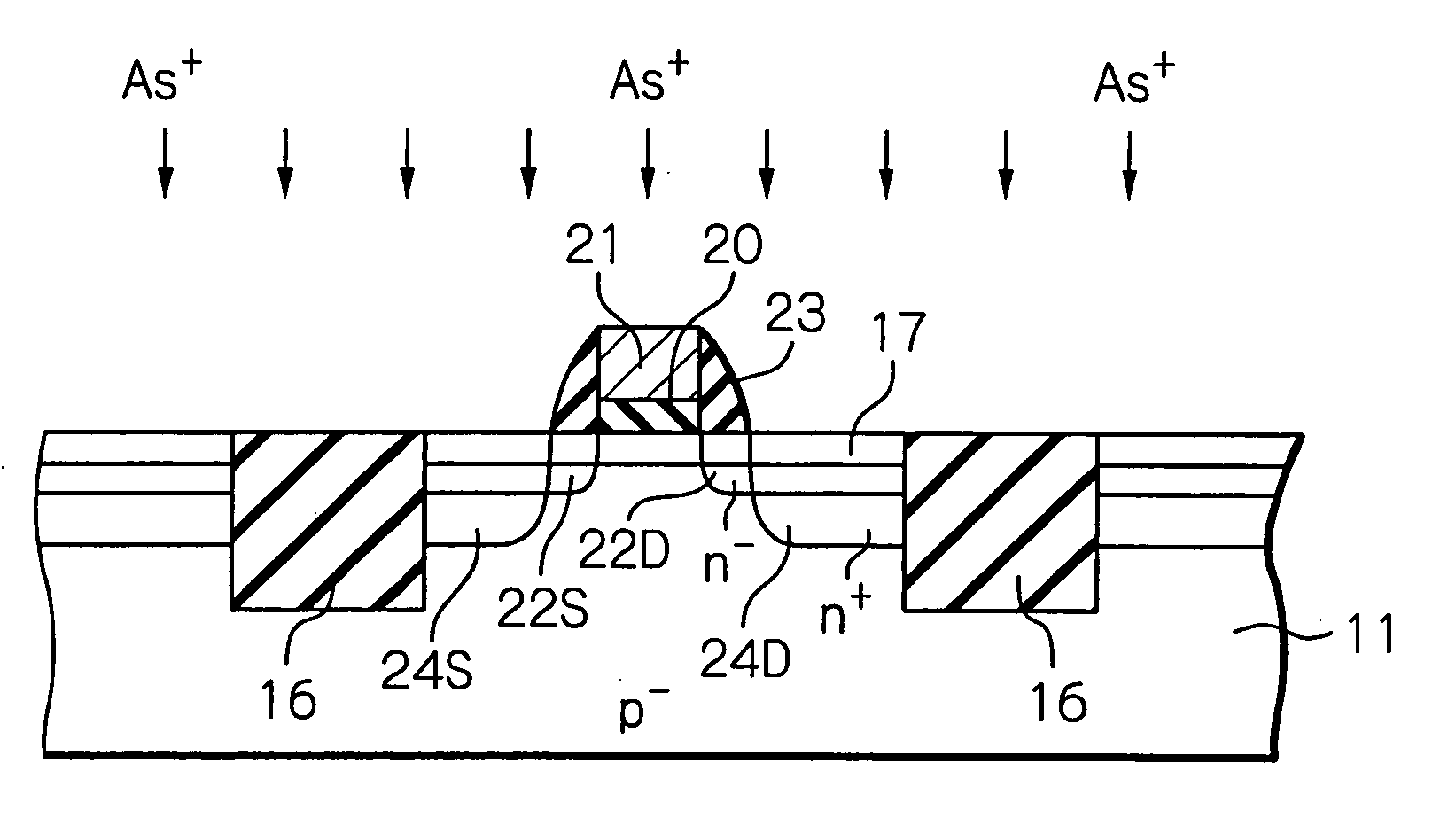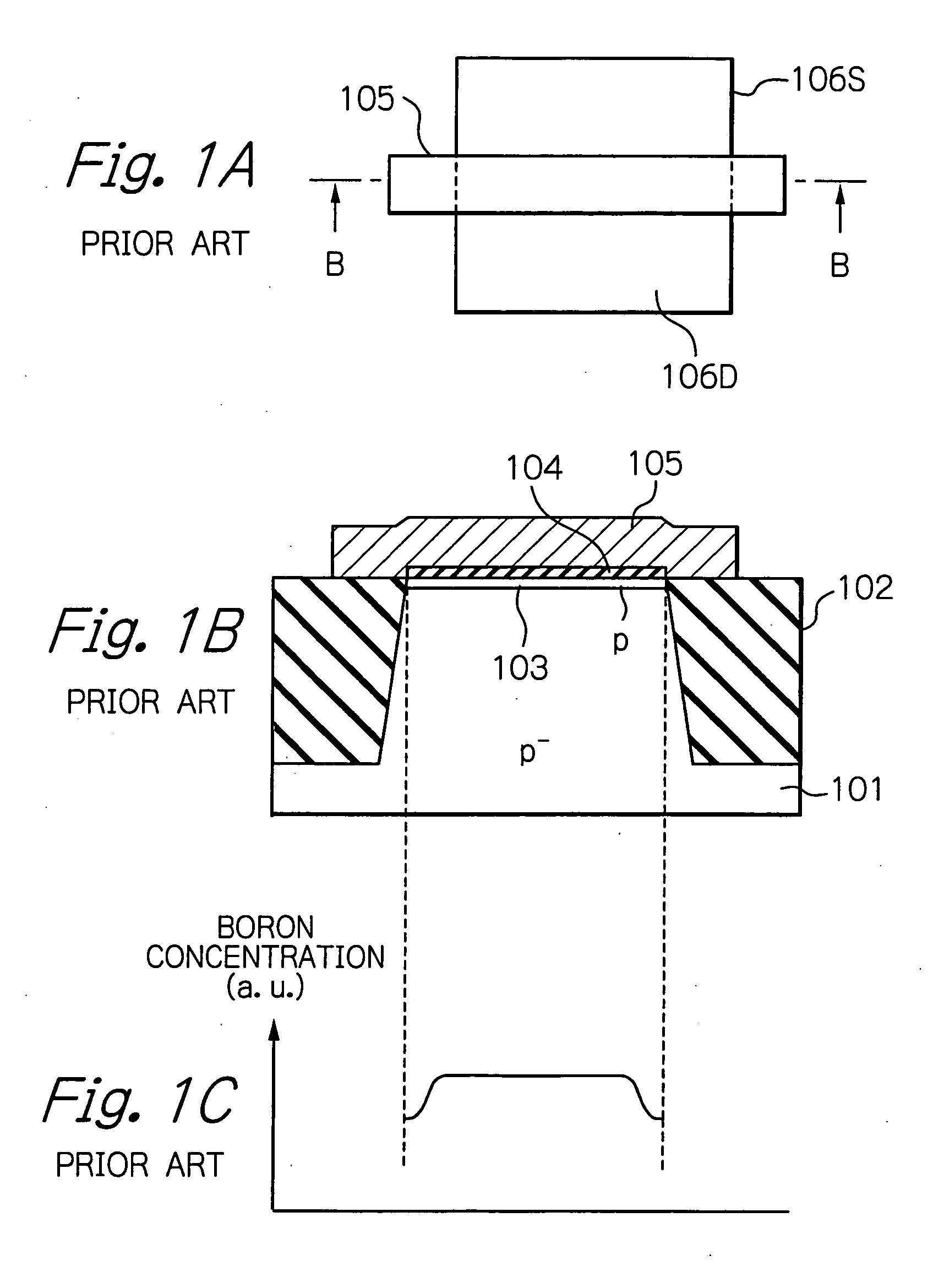Method for manufacturing semiconductor device capable of improving breakdown voltage characteristics
a semiconductor device and breakdown voltage technology, applied in the direction of semiconductor devices, electrical equipment, transistors, etc., can solve the problems of deteriorating breakdown voltage characteristics, and achieve the effect of improving breakdown voltage characteristics
- Summary
- Abstract
- Description
- Claims
- Application Information
AI Technical Summary
Benefits of technology
Problems solved by technology
Method used
Image
Examples
first embodiment
[0052] the method for manufacturing a semiconductor device such as an n-channel MOS transistor will be explained next with reference to FIGS. 6A through 6J.
[0053] First, referring to FIG. 6A, a silicon dioxide layer 12 and a silicon nitride layer 13 are deposited on a p−-type monocrystalline silicon substrate 11. In this case, the silicon dioxide layer 12 can be formed by thermally oxidizing the silicon substrate 11. Then, an opening 14 is perforated in the silicon nitride layer 13 and the silicon dioxide layer 12 by a photolithography and etching process.
[0054] Next, referring to FIG. 6B, the silicon substrate 11 is etched by using the silicon nitride layer 13 and the silicon dioxide layer 12 as a mask. As a result, a trench (groove) 15 is formed within the silicon substrate 11.
[0055] Next, referring to FIG. 6C, a silicon dioxide layer 16 is buried in the trench 15 of the silicon substrate 11 and the opening 14 of the silicon nitride layer 13 and the silicon dioxide layer 12 by a...
second embodiment
[0070] the method for manufacturing a semiconductor device such as two CMOS circuits will be explained next with reference to FIGS. 10A through 10J. In this case, one CMOS circuit is a low breakdown voltage CMOS circuit formed by one n-channel MOS transistor Qn1 and one p-channel MOS transistor Qp1 powered by 3.3V, and the other CMOS circuit is a high breakdown voltage CMOS circuit formed by one n-channel MOS transistor Qn2 and one p-channel MOS transistor Qp2 powered by 5V.
[0071] First, referring to FIG. 10A, an STI layer 32 is formed within a p−−-type monocrystalline silicon substrate 31 in a similar way to those of FIGS. 6A, 6B, 6C and 6D. As a result, element forming areas (active areas) for the transistors Qn1, Qp1, Qn2 and Qp2 are partitioned from each other.
[0072] Next, referring to FIG. 10B, a photoresist pattern layer 33 having an opening 33a corresponding to the n-channel MOS transistor Qn2 is formed on the silicon substrate 31 by a photolithography process. Then, boron i...
PUM
 Login to View More
Login to View More Abstract
Description
Claims
Application Information
 Login to View More
Login to View More - R&D
- Intellectual Property
- Life Sciences
- Materials
- Tech Scout
- Unparalleled Data Quality
- Higher Quality Content
- 60% Fewer Hallucinations
Browse by: Latest US Patents, China's latest patents, Technical Efficacy Thesaurus, Application Domain, Technology Topic, Popular Technical Reports.
© 2025 PatSnap. All rights reserved.Legal|Privacy policy|Modern Slavery Act Transparency Statement|Sitemap|About US| Contact US: help@patsnap.com



